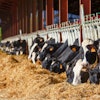
What questions should the feed industry ask when preparing for an outbreak of African swine fever?
The U.S. is in “peacetime” when it comes to African swine fever (ASF), but the animal feed industry should be prepared with a “wartime” biosecurity plan in case that status ever changes, according to Cassie Jones, undergraduate research coordinator in the Department of Animal Sciences and Industry at Kansas State University.
Jones spoke March 8 at the American Feed Industry Association’s (AFIA) Purchasing and Ingredient Suppliers Conference (PISC) in Orlando, Florida.
Feed mills and ingredient facilities should do three things to prepare for an outbreak of ASF in the U.S., Jones said:
- Have a peacetime biosecurity plan, and then take it further.
- Obtain a premises identification number from your state animal health official.
- Develop a wartime biosecurity plan.
To do this, Jones listed some questions feed industry professionals should ask themselves:
- What can the feed industry do now to prepare?
- What will you do if your feed mill is inside a control area?
- What will you do if your feed mill is outside a control area but
- You receive ingredients from inside a control area?
- You have deliveries to swine farms inside a control area?
- You have deliveries to non-swine farms inside a control zone and to swine farms outside the control area?
“Those of us that have mills or have ingredients that serve mills that are multispecies or have the potential to serve swine, we need to be having the conversations: What would happen if you’re in an infected zone? If you need to drive through an infected zone, what types of activities would this affect? And so that really shifts our thinking from kind of a peacetime approach and preventative approach to biosecurity kind of a wartime scenario,” Jones said. “What would happen if a feed mill or an ingredient facility is identified as one of these trace-forward or trace-back systems as having delivered to an infected site, or even a suspected or a contact site? What does that mean to you as a supplier? What does that mean to some of you who may deliver to that site in the future? We don’t know what this means yet.”
If there were an ASF outbreak in the U.S., she said the biggest challenge would be identifying the presence of the virus in feed or feed ingredients.
“We don’t have a way of identifying any ASF positives in ingredients or feed and so it’s going to be difficult for us to be able to understand if we have positives, if the feed industry has some connection or not beyond an epidemiological link. And so it’s going to be difficult to have a high amount of confidence in terms of ingredient movement from one location to the other,” Jones said.

















